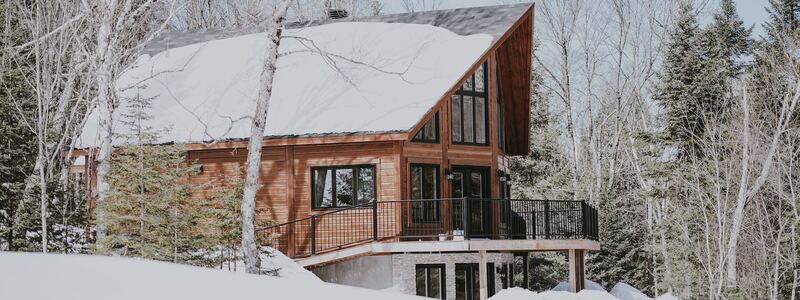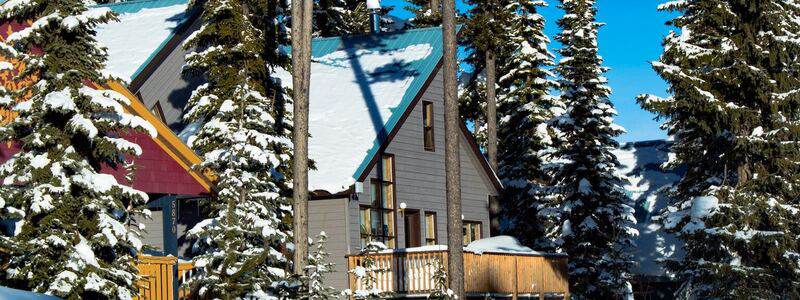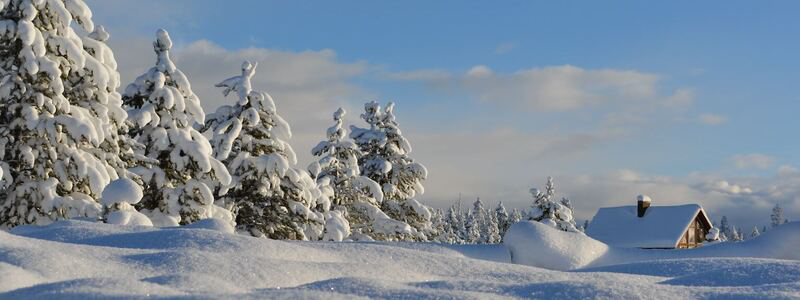
Winter Roof Maintenance Tips
Before winter arrives in full force, it is crucial to prioritize the maintenance and care of your roof. The cold weather, snow, and ice can pose significant challenges and potentially lead to serious roof damage if not properly addressed.
In the following paragraphs, we will provide essential tips for winter roof maintenance to help you prevent common roof problems, identify signs of leaks and damage, minimize ice dams, choose durable roofing materials, conduct thorough roof inspections, and maintain your gutters and downspouts. By implementing those tips, you can ensure the longevity and integrity of your roof throughout the winter season.
One of the key aspects of effective winter roof maintenance is conducting a thorough inspection before the cold weather sets in. This allows you to identify any existing issues and address them promptly. However, it is important to note that inspecting and maintaining your roof during winter can be challenging and dangerous, especially if you’re not experienced or equipped with the necessary tools and safety gear.
Contact the B&M Roofing professional team for your roof inspection. We have the expertise and equipment to perform simple and complex roof maintenance and replacement procedures.

Common Roof Problems in Winter
Winter weather can worsen existing roof problems and create new challenges. It is essential to be aware of common roof issues during this season to address them promptly. Some common problems include:
- Ice Dams: Ice dams form when snow on the roof melts, then refreezes at the roof’s edges, creating a barrier that prevents proper drainage. This can lead to water seeping under the shingles and causing leaks and damage.
- Roof Leaks: Cold temperatures, snow, and ice can cause roofing materials to contract, creating gaps and potential points of entry for water. Leaks can occur when ice or snow melts and finds its way into these vulnerable areas.
- Snow Load: Snow accumulation can put excessive weight on the roof, leading to stress and potential structural damage if the roof is not properly designed or maintained.
- Condensation: Temperature differences between the warm interior of your home and the cold exterior can create condensation in the attic. The moisture can lead to mold growth, compromising not only the integrity of the roof but also making the house interior an unpleasant space to live in.
Signs of Roof Leaks and Damage in Winter
Identifying signs of leaks and damage before winter is crucial to address issues promptly and prevent further deterioration. Look out for the following signs:
- Water Stains: Check the interior walls and ceilings for water stains or discoloration, as they often indicate a roof leak.
- Dripping or Water Pools: If you notice dripping water or pools of water in your attic or ceiling, it clearly indicates a roof leak.
- Icicles and Ice Buildup: While icicles may seem harmless, they can be a sign of poor insulation and the potential for ice dams to form.
- Damaged or Missing Shingles: Inspect your roof for any damaged or missing shingles. Strong winds and ice buildup can cause shingles to become loose or get dislodged.
- Sagging or Uneven Roof Surface: A sagging or uneven roof surface can indicate structural issues caused by snow load or other underlying problems.

Tips for Preventing and Minimizing Ice Dams on the Roof
Ice dams are a common winter problem that can lead to significant roof damage if not addressed promptly. The following tips can help you prevent and minimize ice dams.
Insulate Your Attic
Proper attic insulation helps maintain a consistent temperature and prevents heat from escaping, reducing the risk of ice dams. Ensure that your attic has sufficient insulation and seal any air leaks.
Ventilate Your Attic Regularly
Proper attic ventilation helps regulate temperature and reduces moisture buildup. It allows for the escape of warm air, preventing it from melting snow on the roof and contributing to ice dam formation.
Remove Snow
Safely remove snow from your roof using a roof rake or hire professionals to do the job. Clearing snow helps prevent its accumulation and minimizes the likelihood of ice dams forming.
Install Ice and Water Shield
Consider installing ice and water shield membranes along the eaves and valleys of your roof. This provides an additional layer of protection against water infiltration caused by ice dams.
How to Choose the Right Roofing Materials for Winter Durability
Choosing the right roofing materials is essential for ensuring durability and performance during the winter season. Consider the following factors when selecting roofing materials:
- Material Durability: Opt for materials known for their durability and resistance to extreme weather conditions. Asphalt shingles, metal roofs, and slate tiles are popular choices due to their ability to withstand harsh winters.
- Slope and Pitch: Consider the slope and pitch of your roof. Steeper roofs allow snow to slide off more easily, reducing the risk of excessive snow accumulation and potential damage.
- Insulation Properties: Some roofing materials offer better insulation properties than others. Insulated metal panels, for example, provide excellent thermal resistance, helping to maintain a consistent temperature inside your home.
- Get Professional Advice: Seek advice from roofing professionals who can assess your needs and recommend the most suitable roofing materials for your climate and budget.
Schedule an inspection by the B&M Roofing team to discuss ways to improve your roof and ensure its longevity and safety.
Roof Inspection and Maintenance Before Winter
Roofs take a beating from the weather, and that weather can be harsh in some states, like Colorado. Roofs are one of the most important parts of a home or building because they protect the structure from natural elements such as wind, rain, ice, snow, extreme heat, and hail, but they can be damaged by those elements over time. Before winter arrives, conducting a comprehensive roof inspection and performing necessary maintenance tasks is crucial.
Hire a Professional Roofing Contractor
Consider hiring a professional roofing contractor, such as B&M Roofing, to inspect your roof thoroughly. They have the training to do it safely and the expertise to identify potential issues and provide appropriate recommendations.
Check Flashing and Sealants
Inspect the flashing around chimneys, vents, and skylights for any signs of damage or deterioration. Ensure that all sealants are intact and in good condition.
Clean Gutters and Downspouts
Clear your gutters and downspouts of leaves, debris, and any blockages. Debris uncleared from your roof can clog gutters and cause damage to your property. When gutters are clogged, rain and melted snow cannot drain properly, leading to a buildup of standing water. This can cause interior leaks and shorten the lifespan of your roof. In addition, the extra weight of the debris and water can bend your gutters or tear them away from the roof.
Trim Overhanging Branches
Trim any overhanging tree branches near your roof to minimize the risk of damage from falling limbs and reduce the accumulation of leaves and debris.
Preventing Roof Collapses Due to Heavy Snow
In regions with heavy snowfall, the weight of accumulated snow can pose a risk of roof collapse. Take these precautions to prevent roof collapses:
- Ensure Proper Roof Design and Construction: When constructing or renovating your home, ensure that the roof is designed to handle the expected snow load in your area. Consult with professionals to determine the appropriate roof pitch and structural requirements.
- Remove Snow from the Roof: Safely remove accumulated snow from your roof using a roof rake or hire professionals to do the job. Regular snow removal helps alleviate the excess weight on your roof.
- Strengthen Structural Support: Consider reinforcing your roof’s structural support if you live in an area prone to heavy snowfall. Consult with a structural engineer or a professional roofing contractor, such as B&M Roofing, to assess and reinforce your roof if necessary.

Gutter and Downspout Maintenance
Proper gutters and downspouts maintenance is essential for effective water drainage and preventing ice dams. Follow these tips:
- Clean your gutters at least twice a year, before and after winter, to remove leaves, debris, and any blockages. Clogged gutters can lead to water backup and potential damage to your roof.
- Regularly inspect your gutters and downspouts for signs of damage, such as cracks or sagging. Address any issues promptly to ensure proper water flow.
- If you haven’t done this yet, consider installing gutter guards to prevent debris from accumulating in your gutters and minimize the need for frequent cleaning.
- Check your downspouts to ensure they are properly connected and direct water away from your house’s foundation. Consider adding extensions if necessary to ensure proper water drainage.
Winter Roof Maintenance Tips | B&M Roofing Colorado
Proper winter roof maintenance is crucial for protecting your home and ensuring the longevity of your roof. You can safeguard your roof during the cold season by preventing ice dams, choosing the right roofing materials, conducting thorough inspections, and maintaining your gutters and downspouts.
When it comes to roof inspection and maintenance, you can rely on the expertise of the B&M Roofing team for professional guidance and quality services.
With proper preparation and maintenance, your roof will withstand extreme weather, providing peace of mind and a comfortable living environment.
Roof Replacement by Professionals | B&M Roofing
B&M Roofing has extensive experience in residential and commercial roofing, with a Colorado company providing quality service throughout the Centennial State since 1947.
The premier Colorado commercial roofing contractor uses only the highest quality roofing shingle suppliers: GAF and Owens Corning. We offer a wide range of colors and styles to choose from, ensuring that we can match the right roof shingle color to any home’s style.
We work with brands like GAF and Owens Corning to offer you a variety of roofing materials and colors to choose from and allow you to find the perfect color for your home. B&M is always available to help give your home’s roof the beauty it deserves.




































